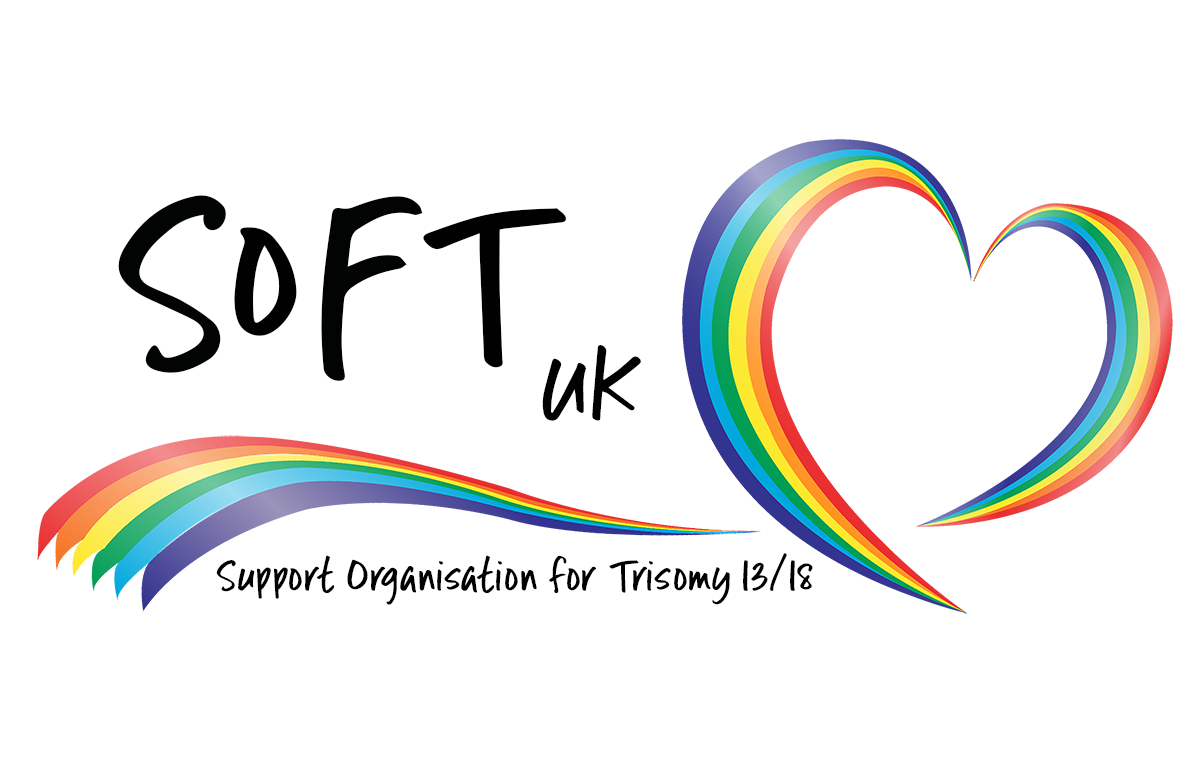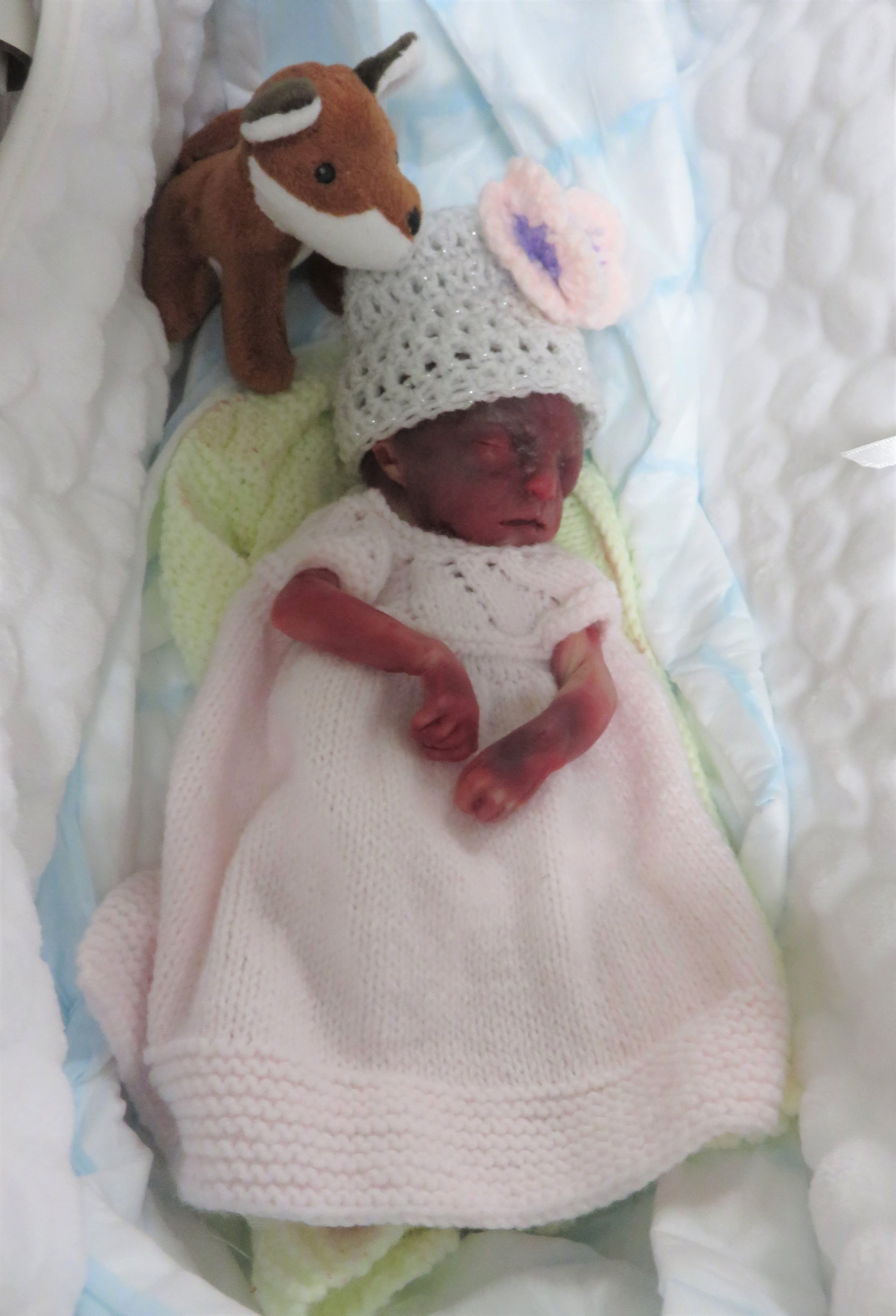Spark of Hope: Lorelei’s Story
Lorelei was our renewed spark of hope.
The year before she was born, we had suffered the death of her big sister Carla, who survived just 30 minutes because of a congenital infection. Unsurprisingly, the first twelve weeks of pregnancy with Lorelei were an anxious time, but an early scan found a strong heartbeat, which offered us some reassurance.
The 12-week scan went very well, and the sonographer could see northing of concern. Lorelei made us laugh by refusing to move into a more convenient position for scanning, despite mummy doing some star jumps. At the 20-week scan, everything still looked fine except for Lorelei’s feet, which were noticeably pointing inwards. The sonographer asked one of the consultants for a second opinion, and the consultant explained that this could indicate a chromosomal abnormality. That said, the consultant could not see any other indicators, and we discussed that it could be a case of club feet, as both Martin and I had some incidence of this in our families. We discussed testing and were pleased to find that we could access the Harmony blood test on the NHS, which offered a much more accurate and non-invasive approach when compared to traditional screening. We had actually opted out of conventional screening at 12 weeks, because we did not want to be faced with the decision of needing confirmation by an amniocentesis on the basis of a test, without good accuracy.

The Harmony blood test can analyse foetal DNA from a blood sample taken from the mother. We had blood samples taken before we left the hospital, and went home feeling concerned, but not particularly worried. The consultant had not noticed any other anomalies on the scan, and we felt sure that we couldn’t possibly suffer another tragedy… We were wrong.
The test results took about a week to turn around. We had booked a holiday with our parents, and decided that we would still go to take our minds off things. It was Thursday 1st October 2021, and we had just settled into the cottage where we were staying. I noticed I had a missed call from the hospital and called back straight away. It was one of the antenatal screening midwives, who advised me that the results of the test indicated a high possibility for Edwards Syndrome. That moment will be burned in my brain forever!
It was our worst nightmare. We had a call with the consultant who had talked to us about the Harmony blood test, where she sensitively explained about Edwards Syndrome to us and laid out our two choices; either to end the pregnancy or continue with it. What she was unable to do in a phone call was to explain the nuances of Edwards Syndrome, or the individual variation, which we would come to find out about later. Although it is possible to go for a termination on the basis of the Harmony blood test, we would never have considered taking such a decision without seeking further information first.
We arranged to return to the hospital for an amniocentesis the following Tuesday. The time until then passed in a blur. We read extensively about Edwards Syndrome on the NHS website, and the prognosis felt bleak. It was cruelly hard to believe with a little creature moving inside of me, doing their best to survive.
We were already under consultant care for Lorelei as a result of our recent history, and so had arranged to see our consultant following the amniocentesis result. We were referred to another consultant to perform the amniocentesis. He did a wonderful job of putting us at ease so we could cope with the situation. We were so distraught, and sadly, it was also Martin’s birthday. The consultant started with a thorough re-scan of Lorelei. He then talked us through the procedure, which would involve a long, thin needle to be inserted to collect some of the amniotic fluid surrounding Lorelei. The risk of miscarriage was about 1 in 200. It was slightly safer at this point of the pregnancy as there was more fluid. We could watch the needle being inserted via the scan image on screen. We could see Lorelei’s little arm and hand reaching towards the needle wondering what it was invading her space. I remember thinking how could there be something wrong with your brain when you were clearly aware of your surroundings and sensations. Following the amniocentesis, the consultant told us that he couldn’t see any other anomalies on the scan apart from Lorelei’s feet. We asked him if he would expect to see more signs of Edwards Syndrome, and he said he would. At no point did he give us false hope, but I will always be grateful for his openness and honesty, as it gave me the strength to leave that place and look into Edwards Syndrome in a lot more detail. We prepared ourselves for the worst, but held on to a glimmer of hope that Lorelei might just be Ok, that the Harmony blood test might have been wrong. At home, I was able to read through some of the medical literature, thanks to my experience working as a medical researcher, and explain what I had learned to Martin. However, it was the discovery of the SOFT website which helped us more. It provided real-world experiences of Edwards Syndrome and the comfort of knowing we were not alone. Other parents were struggling with weighing up the same information and brutal decisions as we were. It also contained much more detailed information about Edwards Syndrome, such as the presence of partial or mosaic forms.
The amniocentesis result took three days, and we had prepared a list of questions for whatever results we received. We went into hospital to see our own consultant for the result. The amniocentesis confirmed full Edwards Syndrome, and even though we knew this was likely to be the case, it was still devastating to hear it out loud. The choices laid before us were either to continue with the pregnancy, knowing that there was a good chance that Lorelei would not survive labour, or to terminate.
It was so very difficult to face the possibility of ending the pregnancy when there were no other signs of the syndrome on the scan apart from her feet! We asked for a more detailed scan in Bristol at the regional centre. We had a very good relationship with the medical staff at Gloucester, and trusted their professional opinion, but we felt we owed it to Lorelei to make our decision with as much information as possible. Our consultant was very supportive of us doing this, but did raise the possibility that the scan may not provide any new information. The scan at Bristol was arranged within a week with an obstetric consultant. The consultant explained that this was a classic presentation of Edwards Syndrome. He explained that he could see the characteristic clenched, overlapping fingers on Lorelei’s hands and the short chin. However, the most significant finding was that her gestational weight was only in the 5th percentile. Worrying, even without an Edwards Syndrome diagnosis, and I had an excess of amniotic fluid. The consultant reassured us that Lorelei was not in distress, but the question that he and none of the other medical professionals could answer was how we could minimise suffering for Lorelei. There just isn’t a right or a wrong answer. It becomes all about your individual situation and whether you can live with the decision you make.
We returned to Gloucestershire Royal Hospital that afternoon to discuss the results with our consultant. The additional information and confirmation provided us with more clarity to take the decision to terminate. We knew that Lorelei’s odds of survival were not good at all, and going all the way through another pregnancy knowing that we would lose another baby was too much to bear. That said, the decision was still agonising, as it clearly has been for many of the other parents on this site who made a similar brave decision. Even after we had decided, we continued to waiver. It was a comfort to know that other parents felt the same fears, doubts and guilt.
We booked into the hospital for the termination. We wanted to meet Lorelei and, at this stage, I would need to be induced anyway. Although I was just over 24 weeks’ pregnant when Lorelei was born, I didn’t need to undergo a foeticide procedure beforehand, as, in law, Edwards Syndrome is considered a lethal abnormality. We were able to speak with a neonatal doctor about this who explained that it was highly unlikely that she would be born breathing at 24 weeks. If this was the case, she would need no medical intervention and would stay with us as she slipped away peacefully. In fact, Lorelei stayed with us, wriggling away, right up to the point where my waters broke… and then the movements stopped.
Lorelei was still born on 24th October 2020. Her name was suggested by Martin, who named her after the tragic folk tale of the beautiful German princess who lived by the river Rhine. We gave her the middle name Faith, because she brought us faith for the future, and the hope of having a successful pregnancy.
On February 21st, 2022, we welcomed Lorelei’s little sister Josephine Marina Rowe into the world. Josephine was born with no abnormalities, and continues to thrive. She has brought us so much joy, as did her sisters. Sometimes, we are asked “is this your first child?” and although it can be awkward or painful, we always acknowledge Josephine’s big sisters, Carla and Lorelei. Our experiences are not unique, and we know that there is strength and healing to be found in solidarity with others. Babies like Lorelei, and all the other babies diagnosed with trisomy conditions teach us so much about life. They are an important reminder of what really matters

